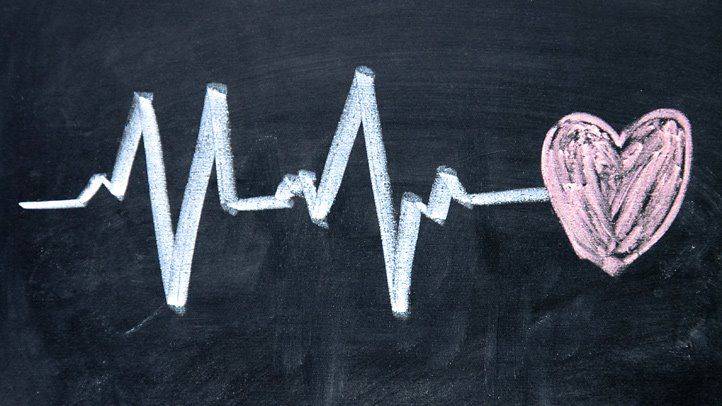Arrhythmias are irregular heartbeats that can occur in various forms and degrees of severity. They can affect anyone, regardless of age or health status. Understanding how common arrhythmias are in the United States is essential for both patients and healthcare providers. This article will explore the prevalence of arrhythmias, focusing on the most common types, their symptoms, risk factors, and the implications for public health.
What Is Arrhythmias?
An arrhythmia is defined as a disorder of the heart’s rhythm or rate. The heart can beat too quickly (tachycardia), too slowly (bradycardia), or irregularly. While some arrhythmias are harmless, others can lead to serious health issues, including stroke or cardiac arrest.
The heart’s electrical system controls its rhythm. This system consists of specialized cells that generate and conduct electrical impulses, causing the heart to contract and pump blood. When this system is disrupted, it can lead to arrhythmias.
Prevalence of Arrhythmias in The United States
Arrhythmias are quite common in the United States. Studies indicate that between 1.5% and 5% of the general population experiences some form of arrhythmia. Atrial fibrillation is the most frequently diagnosed arrhythmia, with estimates suggesting that about 20% of adults will experience AFib at some point in their lives.
Atrial Fibrillation Statistics
AFib is particularly prevalent among older adults. By the age of 80, approximately 10% to 15% of individuals are affected by this condition.
However, many people with AFib may not experience symptoms, making it challenging to determine the true prevalence.
According to the American Heart Association, AFib affects about 2.7 to 6.1 million people in the U.S. and is expected to increase as the population ages. This increase is concerning because AFib is associated with a higher risk of stroke, heart failure, and other complications.
see also: What Recreational Drugs Cause Cardiac Arrhythmia
Risk Factors for Arrhythmias
Several factors can increase the likelihood of developing arrhythmias, including:
Age: The risk of arrhythmias increases with age, particularly for AFib.
Heart Disease: Individuals with a history of heart disease, heart failure, or previous heart attacks are at higher risk.
High Blood Pressure: Hypertension can lead to structural changes in the heart, increasing the risk of arrhythmias.
Obesity: Excess weight can strain the heart and contribute to arrhythmias.
Diabetes: This condition can damage blood vessels and nerves, increasing the risk of heart problems.
Sleep Apnea: This sleep disorder can lead to irregular heartbeats due to intermittent oxygen deprivation.
Alcohol and Stimulants: Excessive alcohol consumption and the use of stimulants like caffeine or nicotine can provoke arrhythmias.
Electrolyte Imbalances: Abnormal levels of potassium, magnesium, or calcium can affect heart rhythm.
Symptoms of Arrhythmias
Arrhythmias may not always produce noticeable symptoms. However, when symptoms do occur, they can include:
Palpitations: A sensation of feeling the heart beat rapidly or irregularly.
Dizziness or Lightheadedness: A feeling of faintness or near-fainting.
Shortness of Breath: Difficulty breathing, especially during physical activity.
Chest Pain or Discomfort: A feeling of pressure or pain in the chest.
Fatigue: Unusual tiredness or weakness.
Fainting (Syncope): Sudden loss of consciousness due to decreased blood flow to the brain.
Diagnosis of Arrhythmias
Diagnosing arrhythmias typically involves a thorough medical history, physical examination, and various tests. Common diagnostic tools include:
Electrocardiogram (ECG): A test that records the electrical activity of the heart and can identify abnormal rhythms.
Holter Monitor: A portable ECG device worn for 24 to 48 hours to capture heart rhythms during daily activities.
Event Monitor: Similar to a Holter monitor but used for longer periods to detect infrequent arrhythmias.
Echocardiogram: An ultrasound of the heart that can help assess its structure and function.
Stress Test: A test that evaluates the heart’s response to physical exertion.
Treatment Options for Arrhythmias
The treatment for arrhythmias varies based on the type and severity.
Some arrhythmias may not require treatment, while others may need medical intervention. Common treatment options include:
Lifestyle Changes: Modifying diet, exercise, and reducing alcohol and caffeine intake can help manage arrhythmias.
Medications: Antiarrhythmic drugs can help control heart rate and rhythm. Blood thinners may be prescribed to reduce the risk of stroke in patients with AFib.
Cardioversion: A procedure that uses electrical shocks to restore a normal heart rhythm.
Ablation Therapy: A minimally invasive procedure that destroys small areas of heart tissue causing abnormal electrical signals.
Pacemaker: A device implanted to help regulate the heart’s rhythm in patients with bradyarrhythmias.
Implantable Cardioverter-Defibrillator (ICD): A device that monitors heart rhythms and delivers shocks if life-threatening arrhythmias occur.
The Impact of Arrhythmias on Public Health
The prevalence of arrhythmias, particularly AFib, poses significant challenges to public health. As the population ages, the number of individuals affected by arrhythmias is expected to rise. This increase will likely lead to a higher incidence of related complications, such as strokes and heart failure.
Healthcare systems must prepare for this growing burden by improving screening, diagnosis, and management of arrhythmias. Public awareness campaigns can also help educate individuals about the symptoms and risk factors associated with arrhythmias, encouraging them to seek medical attention when necessary.
Conclusion
Arrhythmias are a common health issue in the United States, affecting millions of individuals. Atrial fibrillation is the most prevalent type, with a significant impact on public health due to its association with increased stroke risk and other complications. Understanding the prevalence, risk factors, symptoms, and treatment options for arrhythmias is crucial for effective management and improved patient outcomes.
As the population continues to age, the need for awareness and proactive management of arrhythmias will become increasingly important. By addressing this issue, healthcare providers can help reduce the burden of arrhythmias and improve the quality of life for those affected.


